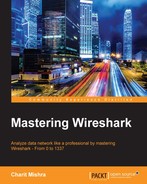Q.1 What is the difference between the active and passive information gathering techniques?
Q.2 Which information-gathering technique is stealthier and why?
Q.3 What do you understand by the term banner grabbing?
Q.4 Use the netcat utility in Linux to connect to a running HTTP service.
Q.5 What is the difference between the –sT and –sS switches used in nmap scans? Can you use both at the same time?
Q.6 Use nmap to perform OS fingerprinting on a machine and then redirect the output of the scan to a file for later use.
Q.7 Without using nmap, can you fingerprint an OS using Wireshark?
Q.8 How OS fingerprinting attempts made against you can lead to serious damage?
Q.9 Figure out the techniques to evade firewalls deployed in corporate environments using nmap.
Q.9 Is it possible to combine two attacking methodologies, ARP spoofing and DNS poisoning, in order to achieve bigger and better results?
Q.10 Try brute forcing a service in you lab environment and analyze the traffic pattern using your own custom-made dictionary files.
Q.11 Try leaning about brute forcing tools already installed in Kali Linux and figure out which tool is more suitable for RDP brute force attacks.
Q.12 What other filter expression can be useful while analyzing the malicious FTP traffic patterns?
Q.13 Is it possible to force encryption over the FTP session so that the following TCP stream won't show the traffic in normal text form?
Q.14 Why is it important to isolate an infected PC that emits unusual traffic from your network, and what traffic patterns related to it make it malicious?
Q.15 Visit various online CTF challenge websites and try solving a few of them. Do you still find it difficult to understand the challenge, or does it seem a bit easier now?
